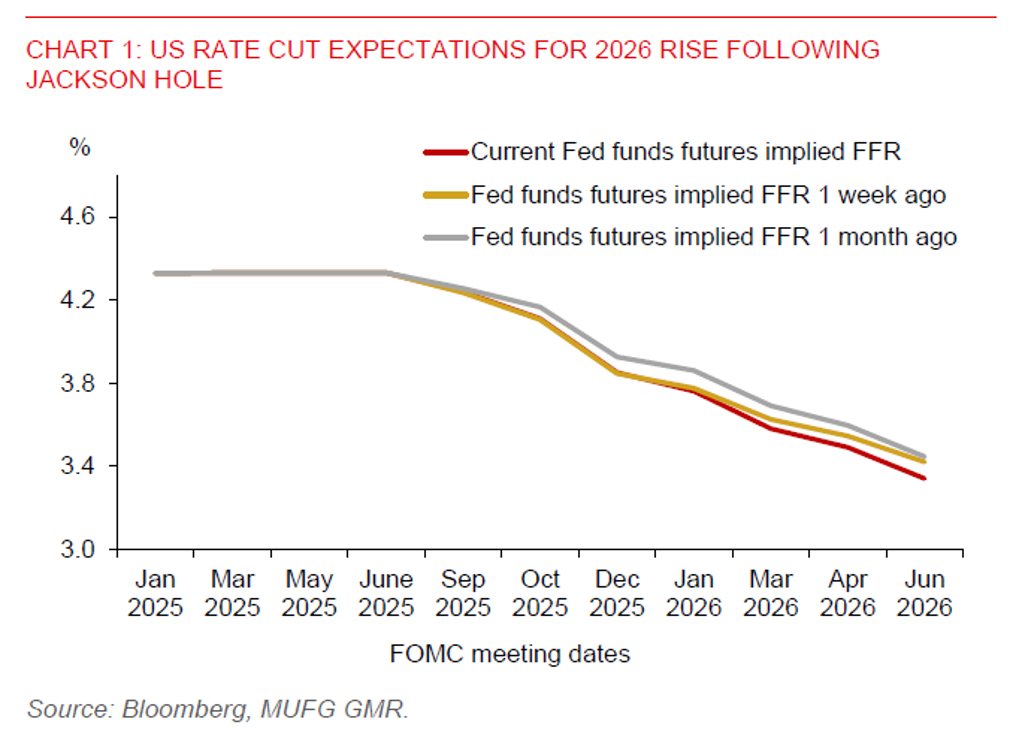Ahead Today
G3: US new home sales, Germany IFO business climate, Japan’s leading index
Asia: Singapore CPI, Thailand exports
Market Highlights
Fed Chair Jerome Powell’s dovish tilt at the Jackson Hole Symposium suggests a potential 25bps rate cut in September. Powell noted that the Fed’s policy stance remains restrictive and acknowledged that “the shifting balance of risks may warrant adjusting our policy stance.” In response, US Treasury yields declined across the curve, and the US dollar weakened by 0.9%.
Powell highlighted signs of a weakening labour market, leaving the door open for policy easing. He pointed out that average job gains slowed sharply to 35,000 per month over the past three months, down from 168,000 per month in 2024. Notably, June payrolls were revised down by over 130,000 jobs. That said, the slowdown in job growth has not led to a significant slack in the labour market, with the unemployment rate still broadly stable at a historically low level of 4.2%. Still, the downside risks to employment have increased. US GDP growth also decelerated to 1.2% in H1, from 2.5% in 2024.
On US inflation, higher tariffs have only led to a modest pickup in goods inflation on a month-on-month basis in June and July. Powell suggested that a reasonable base case is that the tariff effects on inflation will be relatively short-lived. Given the softening labour market, Powell downplayed the risk of a wage-price spiral. Inflation expectations remain well-anchored around 2%, suggesting that tariff-driven price increases may not lead to persistent inflation.

Regional FX
Against the backdrop of potential Fed rate cuts and a weaker US dollar, Asian currencies could enjoy a broadly favourable outlook this week. Following the Jackson Hole Symposium, the Japanese yen (JPY) and Korean won (KRW) appreciated by 1.0% and 1.2%, respectively, while the Singapore dollar (SGD) gained 0.6%.
Notably, the JPY may continue to benefit from narrowing yield differentials with the US, while SGD remains supported by the MAS’s modestly appreciating S$NEER policy stance. High-yielding currencies such as the Indonesian rupiah (IDR) could also find support in a softer dollar environment. However, Bank Indonesia’s surprise rate cut last week may act as a modest drag on the IDR.
